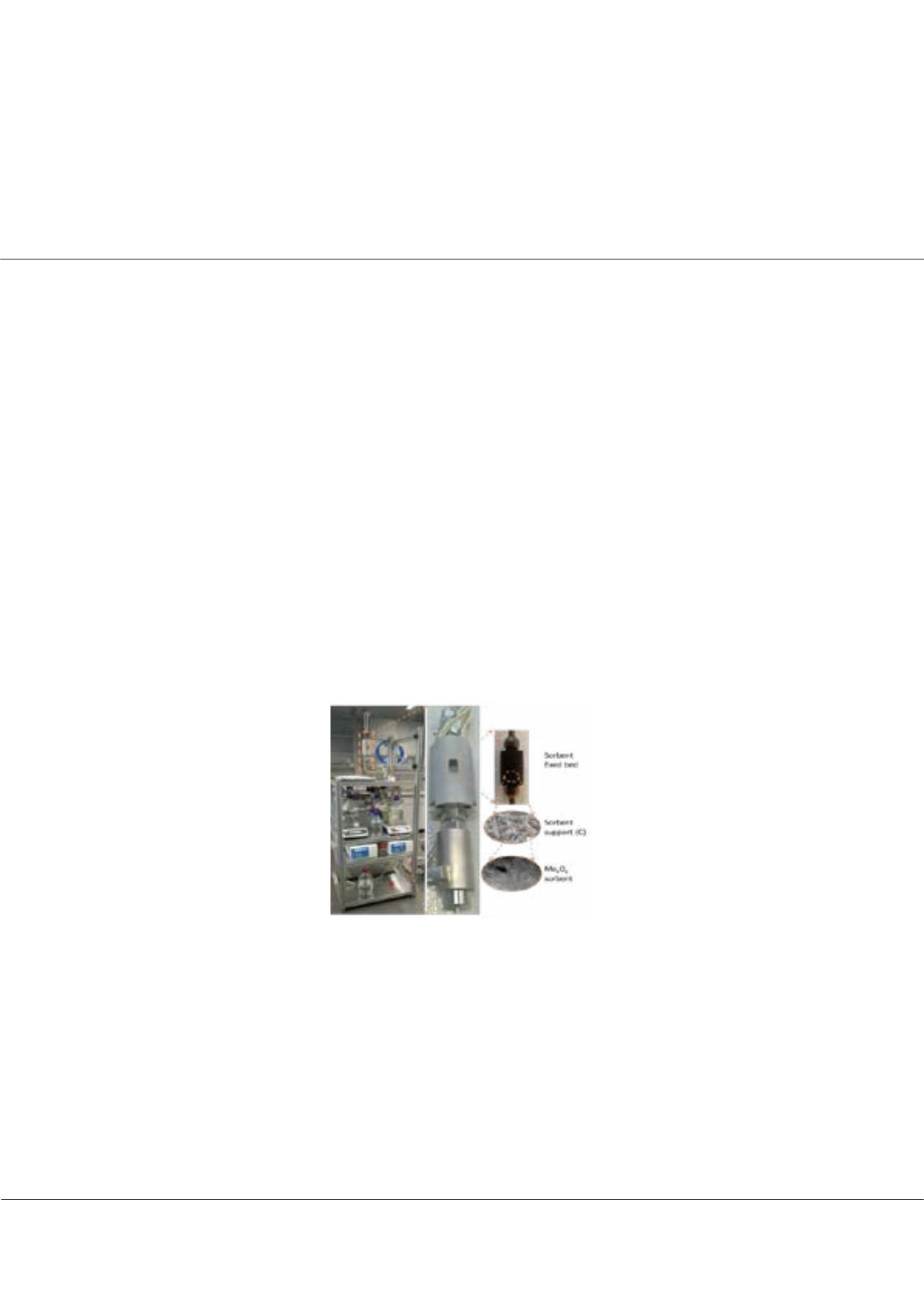

Page 48
conferenceseries
.com
Volume 6
Research & Reviews: Journal of Material Sciences
ISSN: 2321-6212
Advanced Materials 2018
September 04-06, 2018
September 04-06, 2018 | Zürich, Switzerland
21
st
International Conference on
Advanced Materials & Nanotechnology
Adsorbent materials for desulfurization processes under supercritical water conditions
Florentina Maxim, Konstantinos Karalis, Bojan Niceno
and
Christian Ludwig
Paul Scherrer Institut, Switzerland
Statement of the Problem:
It is recognized that the great technological potential of the catalytic super critical water (SCW)
gasification of biomass for biofuel production. However, an important issue related to the poisoning of the catalyst by sulfur (S)
compounds remaining in the SCW phase is still to be solved. To design efficient S adsorbents at SCW conditions is a challenge
since, the sorbent material, which is sought as metal oxide (Me
x
O
y
), must be structurally stable and in the same time to be able
to capture S from both inorganic and organic sources under SCW conditions. The purpose of this work is to design and obtain
supported nano Me
x
O
y
adsorbent materials for efficient desulfurization in SCW. Our previous results reported on the impact
of sorbent geometry on the S adsorption in SCW.
Materials & Methodology:
SCW impregnation of Me
x
O
y
(ZnO, CuO, Mn
2
O
4
, Fe
2
O
3
) on activated carbon was performed in
a continuous flow tubular reactor (Figure), also used for S sorption experiments. In situ neutron imaging (NI), molecular
dynamics (MD) and computational fluid dynamics (CFD) were the main techniques used to obtain fundamental knowledge
on the phenomena taking place when different S species are adsorbed by Me
x
O
y
in SCW.
Findings:
The NI results, reporting on the S in SCW density profiles and flow patterns through the adsorbent were used for the
validation of models applied in MD and CFD. The SCW desulfurization efficiency of different Me
x
O
y
was established.
Conclusion & Significance:
The findings of the present study are of great importance when the goal is to mitigate the
deactivation of the catalyst by S from the foregoing biomass gasification by SCW.
Figure: Dedicated experimental setup for desulfurization under SCW conditions.
Recent Publications
1. Lachos-Perez D, et al. (2017) Applications of subcritical and supercritical water conditions for extraction, hydrolysis,
gasification, and carbonization of biomass: a critical review. Bio fuel Research Journal 4(2):611-626.
2. Stucki S, et al. (2009) Catalytic gasification of algae in supercritical water for biofuel production and carbon capture.
Energy & Environmental Science 2(5):535-541.
3. Peng G, C Ludwig and F Vogel (2017) Catalytic supercritical water gasification: Interaction of sulfur with ZnO and the
ruthenium catalyst. Applied Catalysis B-Environmental 202:262-268.
4. Ates A, et al. (2014) The role of catalyst in supercritical water desulfurization. Applied Catalysis B: Environmental
147:144-155.
Florentina Maxim et al., Res. Rev. J Mat. Sci. 2018, Volume 6
DOI: 10.4172/2321-6212-C3-020
















